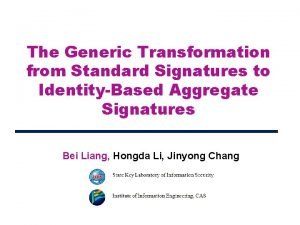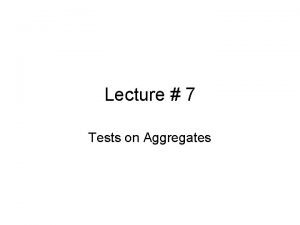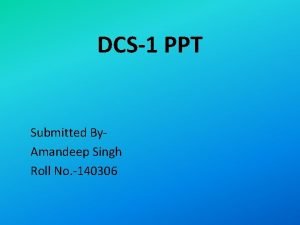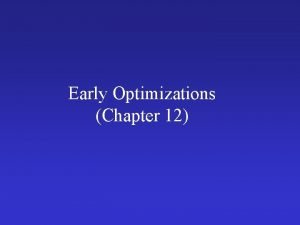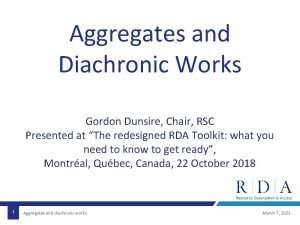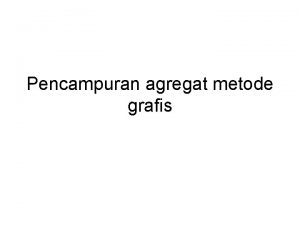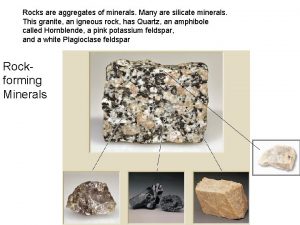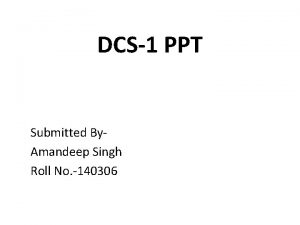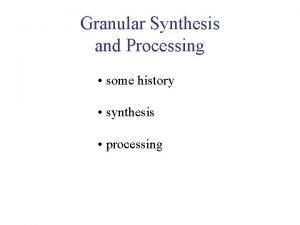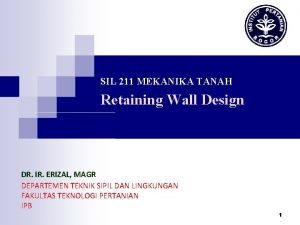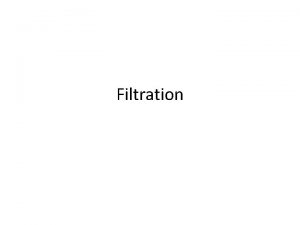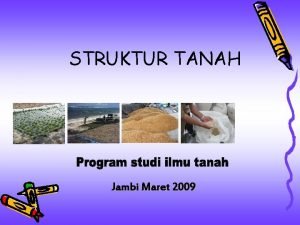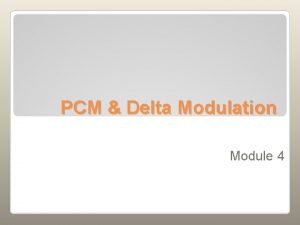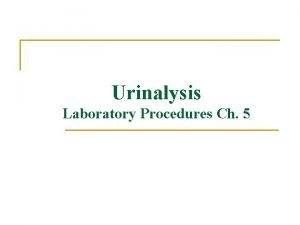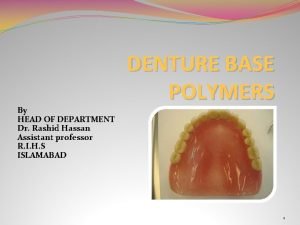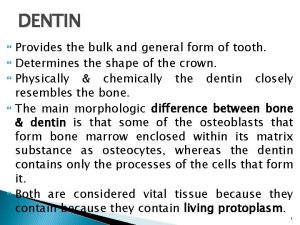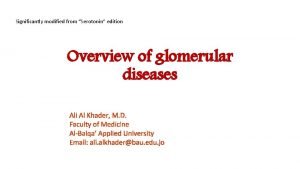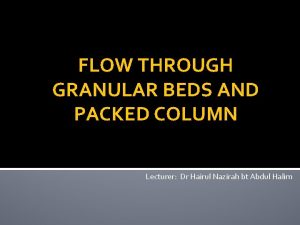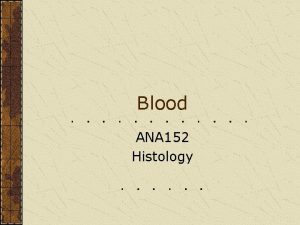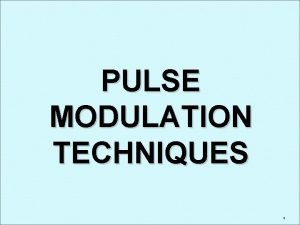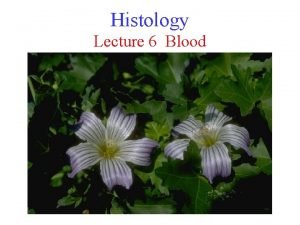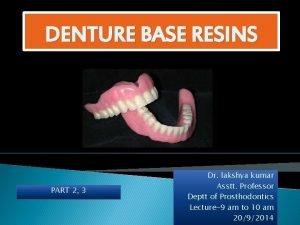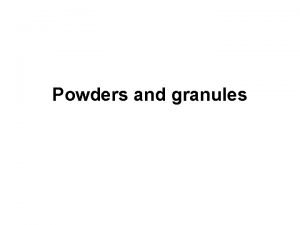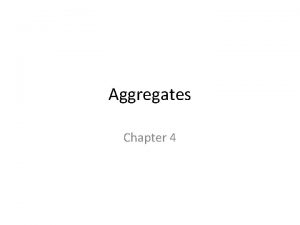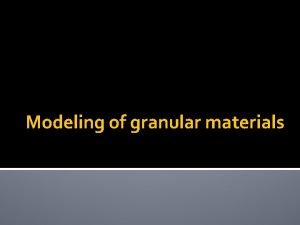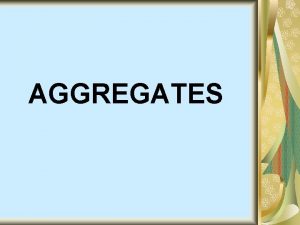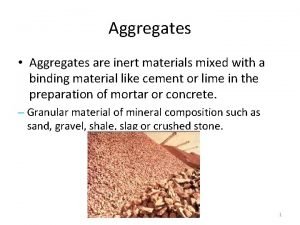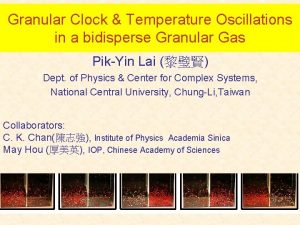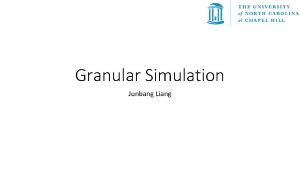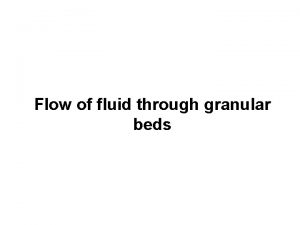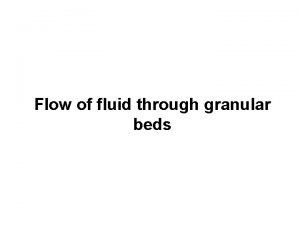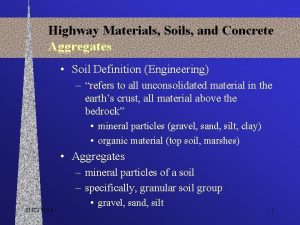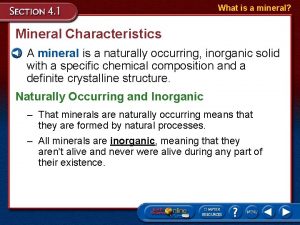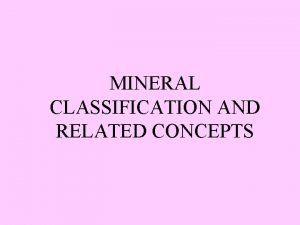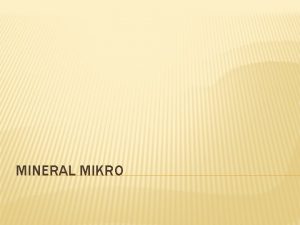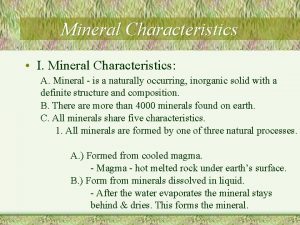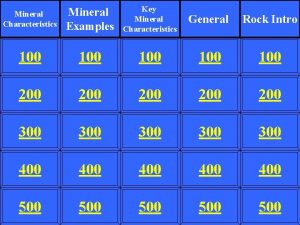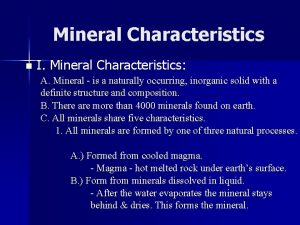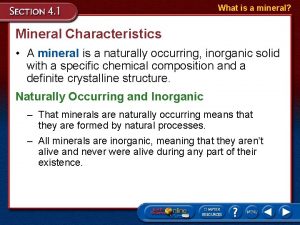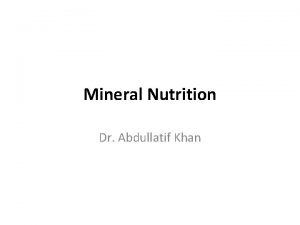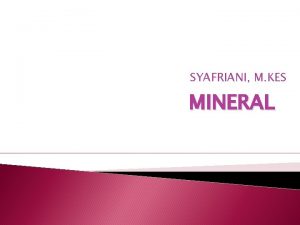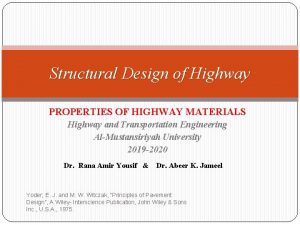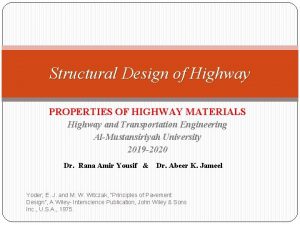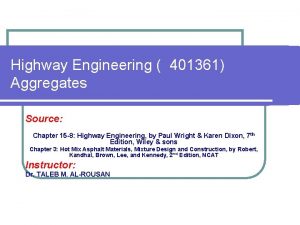Highway Materials Aggregates l Aggregates are granular mineral
































- Slides: 32

Highway Materials/ Aggregates l Aggregates are granular mineral particles that are widely used for highway bases, subbases, and backfill. l Aggregate are also used in combination with cementing materials (Portland cement and asphalt) to form concretes for bases, subbases, wearing surfaces, and drainage structures.

Aggregate Sources l Natural deposits of sand gravel. l Pulverized concrete and asphalt pavements. l Crushed stone l Blast furnace slag

Aggregate processing l Excavations l Transportation l Crushing l Sizing l Stockpiling

Properties of Aggregates 1. 2. 3. 4. 5. 6. 7. Particle size and gradation. Hardness or resistance to wear. Durability or resistance to weathering. Specific gravity & absorption. Chemical stability Particle shape and surface texture. Freedom from deleterious particles or substances.

Particle Size & Gradation l l l l Gradation: Blend of particle sizes in the mix. Gradation affects: Density; Strength; Economy of pavement structure. Particles are separated by sieve analysis. Sieve analysis: Determination of particle size distribution of fine and coarse aggregates by sieving, expressed as %. Grain size analysis data are plotted on aggregate gradation chart. Using the gradation chart engineer can determine a preferred aggregate gradation that meet spec. . Coarse : Retain # 4 ……. Fine : pass # 4 Retain # 200 & fines : pass # 200

SIEVE NO. (log scale) TOTAL PERCENT PASSING (arithmetic)

0. 45 Power Chart %P by wt 100% max size 0% k 0. 45

Typical Gradations Dense or well-graded. Refers to a gradation that is near maximum density. The most common HMA mix designs in the U. S. tend to use dense graded aggregate. l Gap graded. Refers to a gradation that contains only a small percentage of aggregate particles in the mid-size range. The curve is flat in the mid-size range. These mixes can be prone to segregation during placement. l Open graded. Refers to a gradation that contains only a small percentage of aggregate particles in the small range. This results in more air voids because there are not enough small particles to fill in the voids between the larger particles. The curve is flat and near-zero in the small-size range. l Uniformly graded. Refers to a gradation that contains most of the particles in a very narrow size range. In essence, all the particles are the same size. The curve is steep and only occupies the narrow size range specified. l


Types of Gradations * Uniformly graded - Few points of contact - Poor interlock (shape dependent) - High permeability * Well graded - Good interlock - Low permeability * Gap graded - Only limited sizes - Good interlock - Low permeability

Sieve Analysis Example Sieve No. Sieve Size Wt. Retained (g) % Retained Cumulative Retained % Com. % Passing inch mm (wt. ret. / Total) 100% Sum % Retained 100 - Com. Ret. 1" 25 10 0. 5 99. 5 3/4" 19 50 2. 5 3 97 1/2" 12. 5 140 7 10 90 3/8" 9. 5 250 12. 5 22. 5 77. 5 # 4 4. 75 340 17 39. 5 60. 5 # 8 2. 36 50 2. 5 42 58 # 16 1. 18 450 22. 5 64. 5 35. 5 # 30 0. 6 200 10 74. 5 25. 5 # 50 0. 3 175 83. 25 16. 75 # 100 0. 15 225 11. 25 94. 5 5. 5 # 200 0. 075 100 5 99. 5 0. 5 Pan 10 0. 5 100 0 Total 2000 100

Sieve Analysis Example Plot Sieve Size ^. 45 Com. % Passing in mm 1" 25 99. 5 4. 2567 3/4" 19 97 3. 7622 1/2" 12. 5 90 3. 1161 3/8" 9. 5 77. 5 2. 7541 # 4 4. 75 60. 5 2. 0161 # 8 2. 36 58 1. 4717 # 16 1. 18 35. 5 1. 0773 # 30 0. 6 25. 5 0. 7946 # 50 0. 3 16. 75 0. 5817 # 100 0. 15 5. 5 0. 4258 # 200 0. 075 0. 3117

Resistance to Wear l 1. 2. 3. l Material should be hard & resist wear due to: The loading from compaction equipments. The polishing effect of traffic. Internal abrasive effects of repeated loading. Measure used for hardness of aggregate is Los Angelos (LA) abrasion test.

L A Abrasion Test Insert aggregate sample in a drum that rotates 30 – 33 rpm for 500 revolutions with steel spheres inside as an abrasive charge. l Sample removed & sieved @ #12 sieve. l Retained material are washed and dried. l Difference between original mass and final mass expressed as percentage of original mass is reported as %wear. l l %wear = [(Original – Final)/ Original] 100%

LA Abrasion Test - Approx. 10% loss for extremely hard igneous rocks - Approx. 60% loss for soft limestones and sandstones

Durability & Resistance to Weathering (Soundness Test) l l l Soundness Test AASHTO T 104, ASTM C 88 Measures the resistance of aggregate to disintegration in a saturated solution of sodium or magnesium sulfate (Na 2 SO 4, Mg. SO 4). It simulates the weathering of aggregates that occur in nature. It measures resistance to breakdown due to crystal growth. specify max % loss after X cycles l typical 10 -20% after 5 cycles

Soundness Test Before After

Specific Gravity & Absorption Required for the design of concrete & bituminous mixes. l S. G. : Ratio of the solid mass to that of an equal volume of distilled water at a specific temperature. l Due to permeable voids in aggregates, three types of S. G. are defined l l apparent (Gsa) bulk (oven-dry) (Gsb) effective (Gse)

S. G. Cont. Coarse Aggregate Ws or Wssd Wsub Fine Aggregate OD (Ws) or SSD (Wssd) aggregate Container filled with H 2 O Wpyc+w 1 Container + agg + H 20 Wpyc+agg+w 2

Apparent Specific Gravity (Gsa) Computed based on net volume of the aggregates impermeable voids (ip) permeable voids (pp)

Bulk Specific Gravity (Gsb) Computed based on total volume of the aggregates impermeable voids (ip) permeable voids (pp)

Effective Specific Gravity (Gse) Aggregate absorb some asphalt cement (ac). l Gsa assumes all PP absorb ac (Vap = Vpp) l Gsb assumes no PP absorb ac (Vap = 0) l l Neither is correct - Gse defined based on overall volume exclusive of those that absorb ac

Effective Specific Gravity (Gse), Cont. impermeable voids (ip) permeable voids (pp) Calculated from mixture information

Specific Gravity Relationships Gsb < Gse< Gsa

Chemical Stability Aggregate surface chemistry affects bonding to cement. Aggregates that have affinity to water are not desirable in the asphalt mixes. l Stripping l l l Hydrophobic Agg. : Water-hating such as limestone and dolomites have a positive surface charge. Work well in asphalt concrete (show little or no strength reduction) Hydrauphilic Agg. : Water-loving such as gravels and silicates (acidic) have a negative surface charge (show reduce strength). l Gravels may tend to create a weaker interfacial zone in concrete than lime-stone aggregates. l l l Surface coating (dust of clay, silt, gypsum). tend to reduce bond strength. Immersion stripping test

Chemical Stability Cont. l Aggregates used in Portland cement concrete can also cause chemical stability problems. l Aggregates containing deleterious substances (clay lumbs, chert, silt, organic impurities) which react harmfully with the alkalis present in the cement. l Alkali Silicate Reaction (ASR) results in abnormal expansion of the concrete.

ASR l Needs three factors: - Source of alkali - Internal and external - Reactive silica (aggregate) - Water ( humidity) > 80 % l l l ASR results in formation of expansive gels which produce internal stresses which may cause cracking of concrete. Environmental factors such as freeze-thaw cycles, wetting/drying cycles, and traffic loading propagate cracking. Deicing salts, marine environments, can accelerate ASR expansion and deterioration processes. ASR can accelerate corrosion deterioration

ASR Cont.

Aggregate Shape & Surface Texture l Results from Processing l Shape: rounded, sub-rounded, flat, elongated. l Angularity: sub-angular, angular l surface texture: very rough, smooth, polished

Disintegration/ Cleanliness l Clay Lumbs & Friable Particle (ASTM C 142, AASHTO T 112). l Specify max (typical 0. 2 - 10%). l Dries a given mass of agg. , then soaks for 24, hr. , and each particle is rubbed. A washed sieve is then performed over several screens, the aggregate dried, and the percent loss is reported as the % clay or friable particles.

Cleanliness of Aggregates/ SE l sand equivalent (ASTM D 2419) l SE = X/Y *100 l specify min Y X

Things to Remember Aggregates should be clean, tough, durable, and free from : excess flat and elongated particles, dust, clay lumbs, and any other objectionable materials.
 Mikael ferm
Mikael ferm Ibas aggregates
Ibas aggregates Grading of aggregates
Grading of aggregates Sieve analysis of fine aggregate ppt
Sieve analysis of fine aggregate ppt Scalar replacement of aggregates
Scalar replacement of aggregates Gordon aggregates
Gordon aggregates Contoh pencampuran
Contoh pencampuran Properties of rcc
Properties of rcc Rocks are aggregates of minerals
Rocks are aggregates of minerals Grading of aggregates ppt
Grading of aggregates ppt Granular processing
Granular processing Mekanika tanah
Mekanika tanah Granular bed filter
Granular bed filter Lempeng prisma tiang granular merupakan titik-titik tanah
Lempeng prisma tiang granular merupakan titik-titik tanah Calculate quantization error
Calculate quantization error Coarse granular cast in urine
Coarse granular cast in urine Large granular lymphocytes
Large granular lymphocytes Contraction porosity denture
Contraction porosity denture Tomes granular layer
Tomes granular layer Linear immunofluorescence vs granular
Linear immunofluorescence vs granular Granular bed
Granular bed Estructura grumosa
Estructura grumosa Megacariocito granular
Megacariocito granular Agranular and granular leukocytes
Agranular and granular leukocytes Pulse code modulation
Pulse code modulation Pure data granular
Pure data granular Neutrophil vs eosinophil vs basophil
Neutrophil vs eosinophil vs basophil Crazing in acrylic resin
Crazing in acrylic resin Disadvantage of powder
Disadvantage of powder Natural man made
Natural man made Cant stop the feeling go noodle
Cant stop the feeling go noodle Adopting materials
Adopting materials Direct materials budget with multiple materials
Direct materials budget with multiple materials

